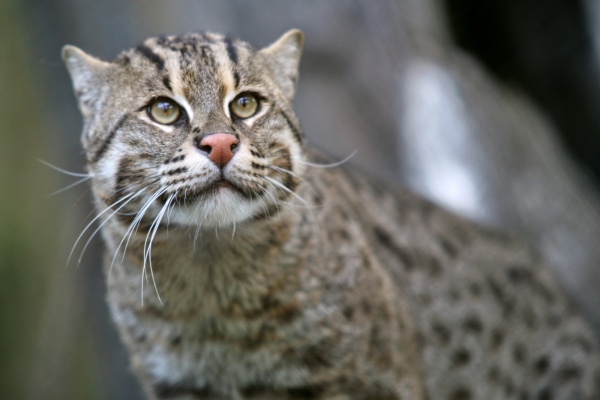Facts About Fishing cat
The fishing cat is a captivating medium-sized wild cat native to South and Southeast Asia. Regrettably, it has been listed as Vulnerable on the IUCN Red List since 2016. These cats are frequently found near wetlands, rivers, streams, oxbow lakes, swamps, and mangroves. Notably, it is also the state animal of West Bengal.
Belonging to the genus Prionailurus, the fishing cat boasts an intriguing evolutionary history that dates back millions of years. Physically, it is quite distinctive with its deep yellowish-grey fur adorned with black spots, webbed feet, and robust build. Remarkably, it is the largest among the Prionailurus cats, being about twice the size of a typical house cat. As its name suggests, the fishing cat is an exceptional swimmer and predominantly preys on fish, although it also hunts birds, insects, and small rodents. It marks its territory through various scent-marking techniques.
Fishing cats are found in a fragmented distribution across South and Southeast Asia, with significant populations in regions such as India, Bangladesh, Sri Lanka, Myanmar, and Thailand. Unfortunately, they face grave threats including habitat destruction, pollution, and conflicts with humans. Conservation efforts to protect them include their listing under CITES Appendix II, national legislation, and captive breeding programs in zoos.
In various regions, people have different local names for the fishing cat, often emphasizing its association with water and fish. Conservationists are diligently working to preserve wetlands and mitigate human-wildlife conflicts to ensure these remarkable cats have a secure future.

 India
India